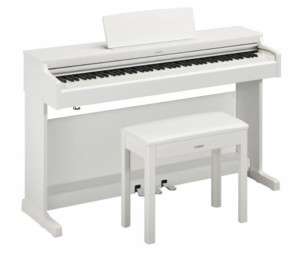Exercises for developing musical ear: it’s time to share secrets!
Contents
Musical ear is a person’s ability to perceive musical works and identify any shortcomings in them or, conversely, evaluate the merits of music.
Some people perceive sounds only of a certain origin and do not distinguish the sounds of music at all. And some musicians, who naturally have an ear for music, are not susceptible to extraneous sounds. There are also people who perfectly distinguish sounds of only one kind and do not perceive sounds of another at all. Thus, hearing development has individual differences.
Inattention or “music deafness”
Most cases of “music deafness” are simply inattention. For example, when a person is doing something, he is completely inattentive to sounds. That is, the ear, of course, perceives the sound, but the brain, focused on the main activity, does not record the sound occurring. Naturally, he will not process it as unnecessary.
Hearing needs to be developed, as it can progress better than any other sense. There are special exercises for the development of musical ear, by practicing which you can develop in the perception and identification of musical sounds and more. By adding the necessary care for your musical ear to the exercises, you can achieve certain heights in music. And if you are careless and inattentive, you will damage your hearing. Next, we will consider several exercises for developing musical ear.
First exercise
The first exercise is for attentiveness and interest. While walking down the street, you need to listen to the conversations of passers-by and hold in your head for some time the fragment you heard. By putting this exercise into practice, after some time you will be able to retain several snippets of conversations in your memory at once.
Second exercise
When listening to the conversations of passers-by, try to remember not only the phrase, but also the voices of people, so that the next time you hear a voice, you can remember the phrase spoken by the owner of that voice. When practicing this exercise, pay attention to the fact that each person has a manner of speaking that is unique to him.
Third exercise
This exercise is also based on voice memorization. There is a funny game where several people with whom he is familiar are seated in front of the main participant and they blindfold him. People take turns pronouncing some words, and the main character of the game must determine who the voice belongs to. This exercise is very useful for hearing development.
Fourth exercise
The next exercise is to listen to a simple piece of music and then try to sing it. This simple exercise promotes intensive hearing development and attention to musical sounds. First, you can just indulge in songs, memorize the lyrics and its melody the first time, or a more difficult and interesting option – try to repeat a piece of instrumental music from memory. After some time, you will feel the ease of playing melodies and you will be able to move on to more complex works.
Fifth exercise
This exercise, oddly enough, is based on listening to lectures. So it will be easier for students to develop hearing and attentiveness than for people communicating in a limited circle. The exercise is as follows: after listening to the lecture, you need to try to reproduce not only the memorized information, but also try to repeat it with the same intonation as the teacher.
By repeating the above exercises for developing an ear for music day after day, you can achieve great heights in the development of not only an ear for music, but also attentiveness and interest in the world around you. And this is a new step towards a person realizing his creative potential, and with a more professional approach to business.
Let’s watch a video that reveals the issues of musical hearing and defines its main types:



